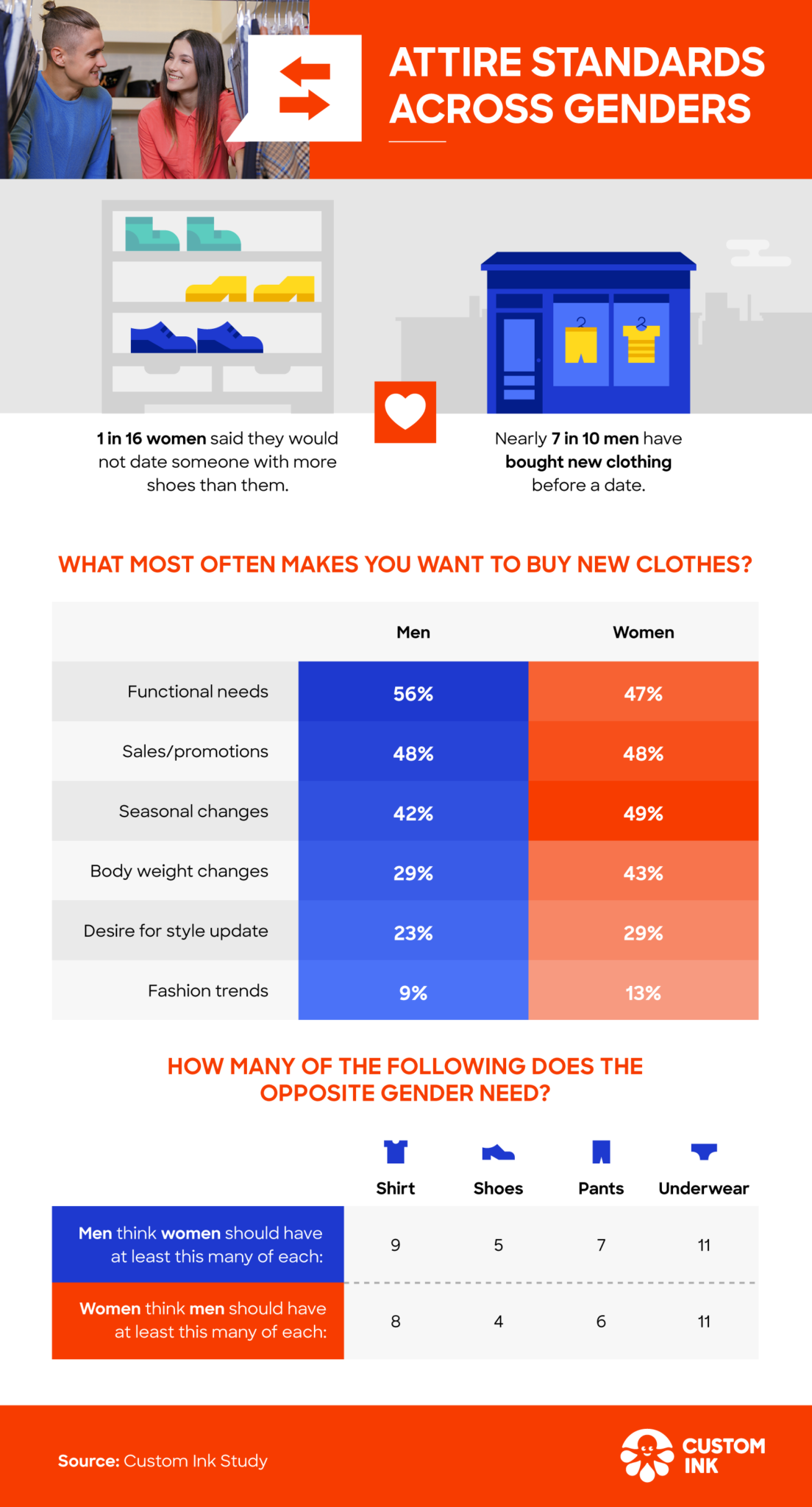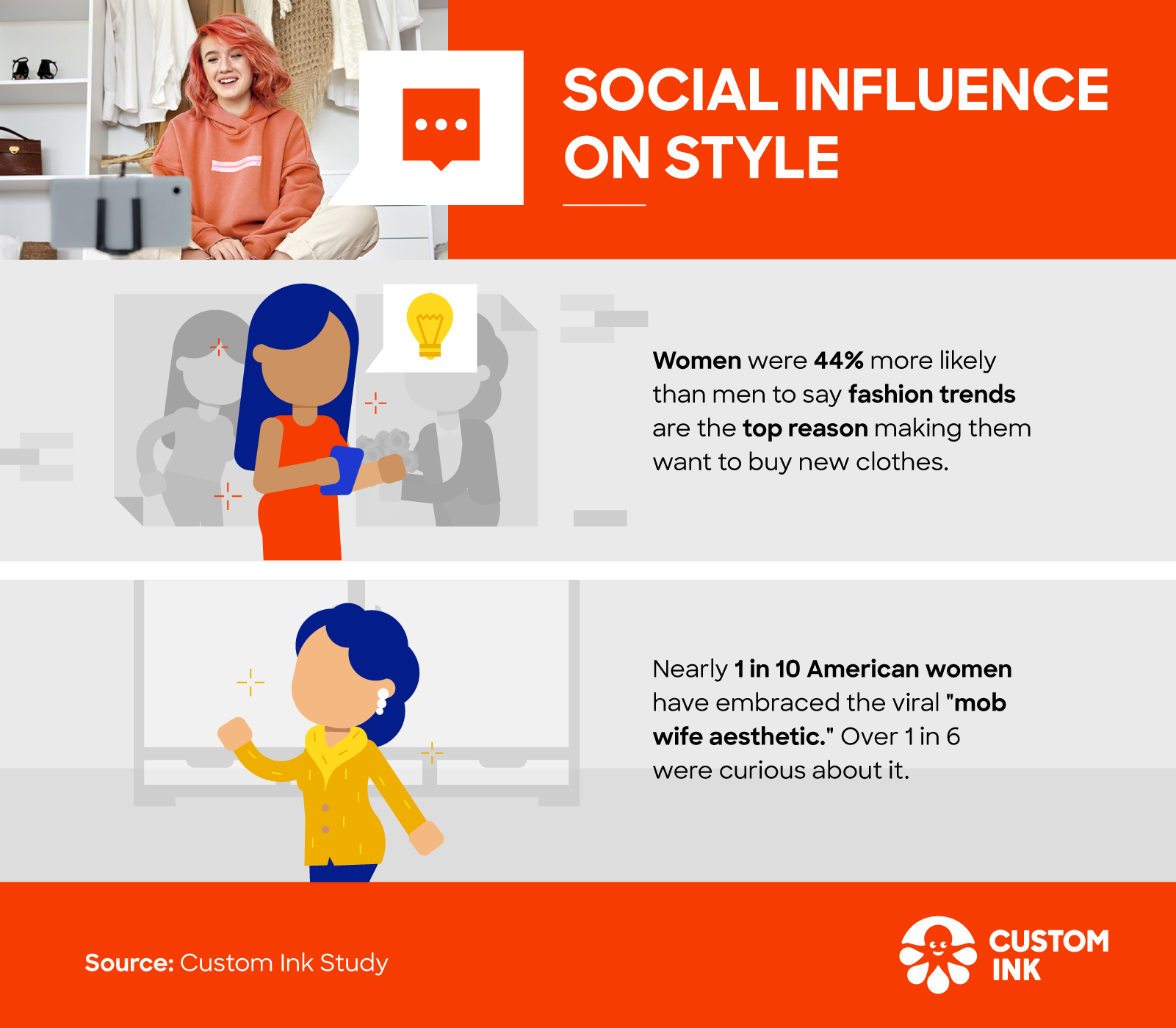Fashion Inventory: Unpacking the Average Closet
What does your closet say about you? In our latest exploration, we’ve sifted through the average closet in the U.S. and U.K., revealing the stories and cherished items within. From garments we can’t part with to those influenced by the latest trends, this article unfolds the fabric of our wardrobe decisions and unveils a balance of functionality and sentimentality, the classic and the contemporary, and how they intertwine to craft our personal styles.
Key Takeaways
- Americans and Britons decluttered their wardrobe once in the past year, on average.
- 1 in 16 women said they would not date someone with more shoes than them.
- Nearly 1 in 10 American women have embraced the viral “mob wife aesthetic.”
- Over half of women would be interested in a color analysis to optimize their wardrobe.
What’s in Our Closets
The content of our closets says a lot about our relationships with clothing. This section of our study peeks at how many clothes we have, decluttering habits, garment longevity, and why some items go unworn.
A significant number of individuals — 40% of Americans and 45% of U.K. residents — said they have too many clothes. That makes sense, considering men typically had a two-week supply of clean underwear, and some women (1 in 10) had held onto a beloved pair for over a decade. Whether for practical or sentimental reasons, choices like these can result in quite a large wardrobe.
As such, wardrobe decluttering emerged as an annual ritual for many, with Americans and U.K. residents alike saying they had done so once on average last year. Gen Z has done it even more often, tidying up theirs an average of twice in the past year. Millennials, meanwhile, cherished their vintage pieces: nearly 2 in 5 owned a shirt that had been part of their fashion lineup for 10 years or more.
As for the untouched sections of our closets, the reasons spanned from the practical to the personal. Here’s the breakdown of responses by gender as to what it is about some clothing items that makes their owner not wear them very often:
- Out of season (Men: 56%, Women: 68%)
- Wrong size (Men: 45%, Women: 56%)
- Uncomfortable (Men: 29%, Women: 32%)
- Lifestyle/job change (Men: 23%, Women: 30%)
- Sentimental value (Men: 25%, Women: 26%)
Nearly 3 in 5 women have kept clothing that no longer fit, perhaps as mementos of cherished memories. This attachment to our clothes suggests complex connections, reflecting our journeys, transformations, and the stories we wear.
His and Hers Fashion Insights
Do wardrobe and dating preferences align? The next part of our study covers that and more, including men’s and women’s expectations regarding clothing and footwear.
Some women showed a preference for simplicity in a partner’s wardrobe: 1 in 16 said they would not date someone with more shoes than them. But men and women were aligned on what they felt were the top wardrobe staples:
- Basic t-shirts (Men: 73%, Women: 71%)
- Jeans (Men: 71%, Women: 73%)
- Casual shoes (Men: 69%, Women: 75%)
For the specifics, women believed that men should have at least four pairs of shoes and 11 pairs of underwear as a practical baseline. As we discovered in the last section, men were right on track, with an average of 14 pairs of underwear and six pairs of shoes in their closets. Men thought women should have at least ten shirts, and we found that women were well stocked in this respect, with an average of 17 shirts.
Fashion trends influence our wardrobe choices with the promise of freshness and relevance. Women, in particular, were 44% more likely than men to let current trends steer their clothing habits — especially the “mob wife” aesthetic, which has taken social media by storm.
Nearly 1 in 10 American women have wholeheartedly adopted the bold, maximalist “mob wife” style characterized by flashy, grandiose pieces like big fur coats and large earrings. Even more women (1 in 6) were curious about this emerging look. A resounding 72% believed that age should not restrict anyone from embracing mob wife style, championing fashion as an ageless outlet for boundless personal expression.
Color Dynamics in Closets
This part of our study sheds light on wardrobe color dynamics, interest in “color analysis,” and the hues dominating closets across the U.S. and U.K.
Over half of the women surveyed were keen on the idea of a professional color analysis, with a slightly higher interest among U.K. women (54%) than their American counterparts (48%). A color analysis can help determine which colors make you look your best based on your natural features, helping you pick the right colors for your clothes, hair, and makeup.
Black, blue, gray, white, and green topped the list for clothing color preferences, illustrating a tendency towards versatile and easily coordinated shades. U.K. residents (42%) were more inclined than Americans (35%) to primarily wear monochromatic outfits: a minimalist yet often bold look. Sticking to one color palette can also simplify the daily decision of what to wear.
Our journey through the closets of the U.S. and U.K. concludes, leaving us with a richer understanding of today’s wardrobe preferences and habits. Decade-old underwear, Gen Z’s methodical decluttering, the “mob wife” look, and interest in professional color analysis all tell a story about our evolving culture and fashion sense. Our closets are windows into our identities, highlighting the practicality, sentimentality, and aspirations that define us.
Methodology
To explore the average closet, we surveyed 504 residents of the U.K. and 510 Americans. This sample comprised 54% women, 45% men, and 1% non-binary.
About Custom Ink
Custom Ink empowers people and groups to express their unique identities with custom apparel and accessories. Our blend of innovative design, exceptional service, and quality products effortlessly transforms your ideas into reality.
Fair Use Statement
If you’re intrigued by the insights on wardrobe habits and trends we’ve shared, feel free to spread the word for any noncommercial use. We only ask that you include a link back to this page so your audience can see our full findings and survey methodology.






Leave a Comment